Last Updated on January 19, 2024 by Greg Gillson
It’s been a while since I’ve read any bird books for beginners. So to help you decide which is best, I went online and bought the currently available field guide bird books for beginners. In the rest of this article I will review them and make recommendations.
Because I assume if you ask this question your intention is to purchase a bird book, I have provided links throughout for you to do so (and I do earn a small commission if you purchase through the links here within).
Here is my ordered list of the best bird field guides for beginners:
National Geographic Backyard Guide to the Birds of NA. 2011 (150 species)
Kaufman Field Guide to Birds of North America. 2005 (full field guide)
Peterson Field Guides to Birds of North America. 2008 (full field guide)
Stokes Beginner Guide to Birds: Eastern region. 1996 (100 species)
Please read below for how I determined this ranking and what each book has to offer, and where each book falls short. Then you can decide for yourself which book is best for you.
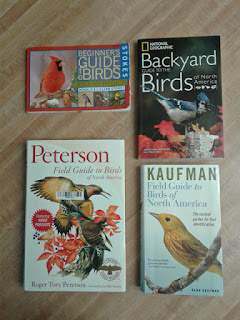 |
| Field guides for beginners |
What separates a beginning bird watching book from the standard field guides?
There are over 10,000 species of birds in the world. Even dividing the world up into continents, there are still a bewildering array on each continent.
To keep it as simple as possible, a beginner field guide might limit the total number of species to just the most expected. It may confine itself to a smaller geographic area. It may not illustrate all the variations due to age, gender, seasonal or regional differences. The text may be reduced to the bare minimum to save page space. The discussion of nesting, voice, habitats, similar species and behavior my be eliminated. Maps might be tiny or absent.
There are 1,023 bird species in the 7th Edition of National Geographic Field Guide to the Birds of North America. And this book doesn’t cover Mexico or Middle America!
This field guide is for serious birders who search diligently for as many species as they can find, from the Arctic tundra to the SW deserts to the Florida Keys, and a hundred miles off both coasts in boats large and small. No serious birder would be without this field guide.
A beginner could certainly use this excellent book, but might be overwhelmed by the detail.
Birding can be as simple or as complicated as you want. But the last thing anyone wants to do is make a beginner give up!
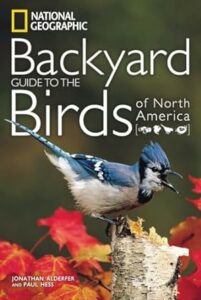
What do I mean by a standard field guide?
A “standard” field guide for North American birds is one that displays identification criteria for all birds accepted as having occurred in North America as of the date of publication.
If a bird has been seen at least 5 times in the past 100 years somewhere on the North American Continent (north of Mexico), and is not extinct, it better appear in these books! This will mean that these books cover at least 950 species, if not more than a thousand.
Such a birding field guide should show males and females if different, breeding and non-breeding if different, and juveniles if frequently seen in such a plumage. Illustrations should show multiple diagnostic poses, including in-flight.
It better have accurate and up-to-date maps. It must discuss songs and calls. It must tell what habitats the birds nest and winter in.
These field guides are “the best of the best” but may not be the best for beginning bird watchers.
Others have tried, but these 3 field guides are the gold standard for advanced, modern birding guides:
- National Geographic Field Guide to the Birds of North America, 7th Edition, September 2017.
- Sibley Guide to Birds, 2nd Edition, 4th printing, December 2017.
- Stokes Field Guide to the Birds of North America, October 2010.
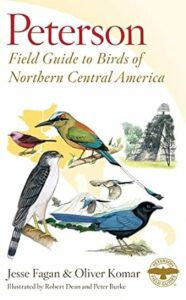
What are my criteria for determining a “best bird book for beginners”?
To be a “best birding field guide for beginners” such a book must meet the following requirements:
- Must include the common everyday birds someone would expect in their backyard or neighborhood
- Must include both gender and seasonal plumage variation where different
- Must arrange birds in a way that makes it easy for a user to quickly find the bird in the book
- Must be helpful in separating similar species
- Must be helpful in teaching how to identify birds in general
- Must be sized to carry in the field where beginners need it
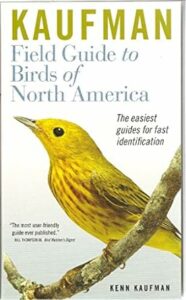
Reviews
Alderfer, Jonathan and Paul Hess. National Geographic Backyard Guide to the Birds of North America. Washington D.C.: National Audubon Society, 2011.
256 pages
150 Species
Sequence: phylogenetic with color index
This Backyard Guide uses illustrations from the more advanced National Geographic Field Guide to the Birds. Plus it also adds some photographs. Photos are annotated. Each species account covers identification (plumage, similar species, voice), range, food and nesting. At the bottom of the species account are boxes for each month to check off your sightings to help you learn seasonality in your own location.
Every 10 pages or so a teaching page discusses some aspect of bird behavior or other interesting topics.
The first 34 pages of the book discusses “backyard basics” topics such as bird feeding, bird watching and landscaping your yard to attract birds.
How does this field guide do in meeting the criteria for a good beginner bird watching book?
With 150 species this book covers most of the backyard birds and many other commonly seen birds in North America. By taking illustrations from its more advanced field guide version it shows alternate plumages very well.
The birds are sequenced in phylogenetic order. Though this is not intuitive, it is the standard for most field guides, especially as they become more advanced. Similar species is a subheading for each species account.
The first paragraph of the identification gives behavioral clues and size that helps learn bird identification, but a general “how to watch birds” is not really included, except for pages 41-42 “keys to identifying birds.” At 5-1/2×8 inches it is suitable for carrying in the field.
My recommendation: The National Geographic Guide to the Backyard Birds of North America is a great book for beginning birders showing a reduced number (150 species) of just the most common species.
Kaufman, Kenn. Kaufman Field Guide to Birds of North America. New York: Houghton Mifflin Company, 2000.
391 pages
Full field guide (750+ species)
Sequence: Field friendly variation of phylogenetic list
Kaufman divides all North American birds into 15 groups that are readily separated from one another by their overall shape. This is one of the first field guides to do so. It is a full standard field guide showing at least 750 species. Only the rarest of birds are omitted (especially rare seabirds, which I notice because they are my specialty).
Here is an example of how this field friendly guide differs from the traditional phylogenetic sequence.
In traditional field guides the Pied-billed Grebe and American Coot are not near each other, as they are not closely related, though they do resemble each other superficially–ducklike birds with white triangular bills and webbed toes. The same for the long-legged, long-necked waders Sandhill Crane and Great Blue Heron. They are superficially similar but not closely related using other characters.
In traditional field guides the crane and heron are not near each other. In fact, the coot and the crane are quite closely related even though they don’t appear that similar at first glance. The coot and the crane may be on the same page in traditional field guides. In this field friendly arrangement, however, the coot and grebe are on the same page. The crane and the heron are on the same page. Wonderful!
Another unique aspect of this book is that it uses digitally-enhanced photographs. There are several photographs of most species, as needed, to show variation and posture. Each bird is digitally cut away from the photographed background and placed on a solid-colored page of pale blues, greens, yellows.
The birds are additionally edited to remove harsh shadows. The white balance is adjusted to that each bird on a plate appear to have been photographed under the same light conditions. Golden hour yellowness and overcast blueness have been edited away. Thus, this guide has the realism of using photographs, and the even coloration usually only possible in illustrations.
How does this field guide do in meeting the criteria for a good beginner bird watching book?
This guide includes all but the rarest North American birds. Thus it will reasonably include any bird a beginner is like to see. Gender and seasonal plumage variation is well covered.
The arrangements of species is perhaps the most-helpful and intuitive layout ever for a field guide to birds.
Arrows point to field marks to help separate similar species as also described in the text. Pages 12-15 give a brief overview on how to identify birds. The more compact size of this guide (4-3/4 x 7-3/4) make this a truly useful field book to carry in your pocket.
My recommendation: A unique and excellent full field guide to North American Birds. There are many features that truly make this a top choice for beginning birders. It has been a while since the last printing. I’d like to see an updated version.
Peterson, Roger Tory. Peterson Field Guide to Birds of North America. Boston: Houghton Mifflin Company, 2008.
527 pages
Full field guide (800+ species)
Sequence: phylogenetic
I learned to watch birds on a Peterson’s field guide, as have millions of others.
The main feature of this guide is that similar birds are all depicted on the same plate in a stylized manner. All birds on a plate all face the same direction and all have very similar postures, even if some of the birds in life have much different postures from each other.
Peterson’s original plates were more monochromatic and patternistic. This can still be seen on some of the plates for hawks and ducks in flight. But even on more recent paintings there is often only a suggestion of feathers. They are not extremely detailed as more modern field guides tend to be.
It is for this reason that I include the Peterson field guides in the “beginner” category, even if it does include all North American birds (north of Mexico).
One thing I find odd is that 85 pages in the index are devoted to larger maps that are reproduced exactly in the species accounts as thumbnails. This seems like wasted duplication better given to additional textual content.
As a beginner’s bird watching book this guide may be quite advanced. The original Peterson guides had far fewer plates and smaller illustrations. Thus more species would appear on a plate for comparison.
While earlier versions may have had 35 or so plates, this one has nearly 200. This makes finding an unknown bird in the field very difficult.
On the other hand, as an advanced field guide, the Peterson guides are lacking in quality of the modern field guides (since 1985 or so).
This latest field guide shows all of North America in one guide (Peterson’s guides were traditionally in Eastern and Western versions).
This guide is a loving reminder of field guides long past. But it is not ideal for either the beginners or more advanced students today.
How does this field guide do in meeting the criteria for a good beginner bird watching book?
This book adequately covers all species one is likely to see. It covers variation in plumage, but not as well as most modern field guides. By including more pages of plates with larger illustrations, it is no longer possible to compare similar species side-by-side on the same plate.
It is actually hard to find an unknown bird with this new version of Peterson than in past versions. It is decent in separating similar species. It does a good job in the introduction on describing the parts of a bird and aid in general bird identification.
It used to be that a Peterson field guide was the exact perfect size for carrying in the field. This new version, however, at 6-1/4×9-1/4, is much too big to fit in a pocket.
My recommendation: I could be wrong, but sadly I think the time of the Peterson field guide is gone. Modern optics allows us better views of birds. We have learned so much more on how to identify birds formerly considered difficult to separate beyond museum specimens. More modern field guides are just so much better.
This current incarnation of Peterson is not field friendly. It is, however, a reminder of my early birding days. As such, I am glad to have this book in my library for the emotional attachment. As a birding reference it is not a book I will use often.
The bird voices transcribed to match English words or sounds, though, is helpful. I still hear birds singing just the way Peterson describes them.
Stokes, Donald W. and Lillian Q. Stokes. Stokes Beginner’s Guide to Birds: Eastern Region. New York: Little, Brown and Company, 1996.
126 pages
100 species
Sequence: Color
The Stokes have produced some marvelous field guides. This one (in an Eastern and Western version) is too simple for me to recommend as a bird watching book for beginners.
It divides 100 common backyard birds by color. Of course, most birds show great variation in color. And summer and winter, male and female, offer additional variation. Thus, I do not like field guides based on color where a flamingo and a cardinal could appear on the same page.
This book addresses some of the variation by repeating male and female colors in different parts of the book. Thus the yellow female Summer Tanager is on page 9. The red male Summer Tanager is on page 19. The summer American Goldfinch is in the yellow section on page 3. The pale buff, white and black winter plumage is on the gray page 110.
How does this field guide do in meeting the criteria for a good beginner bird watching book?
This book does include the most common everyday backyard birds. Variation is covered nominally, though males and females or summer and winter plumages may be well separated in the book.
If a bird is primarily one color it may be easy to find. If it is multi-colored it is harder to locate. It is not helpful in separating similar species, in part because there is only one bird per page, but also because the number of birds is quite limited at 100 species. Color is not a proper way to learn to identify birds.
Shape is the most important.
The tiny size of 4-1/2×7 does make it easy to fit in a pocket.
My recommendation: This book may be suitable as a gift for a child or a person only interested in watching birds at a feeder. You may be able to pick up a used book at Amazon for not much more than the shipping cost.
Wrapping Up
The best Backyard bird watching book is the National Geographic Backyard Guide to the Birds of North America. It displays 150 of the most common backyard birds, plus other helpful material.
The best standard field guide for beginners, and easiest to use in the field, is the Kaufman Field Guide to the Birds of North America. It displays over 750 species in a truly unique and field friendly format.
Though I didn’t review it here, I always recommend the National Geographic Birding Essentials (2007). It is an excellent overview of bird watching and how to improve your birding skills. This is not just for beginners, birders of all skill levels can benefit. Read my review in my blog post: “Bird watching kit for adults.”
These then are my recommendations for the best beginner bird watching books, specifically, the best field guides for beginners. These should get you off to a fine start in your bird watching adventures.
Frequently Asked Questions
What are the different types of bird books I can buy?
The world of bird books is vast and exciting, offering something for every level of birdwatcher and interest. Here’s a breakdown of different types of bird books you can explore:
Field Guides:
- Regional Guides: Ideal for beginners focusing on birds in a specific area like your state or country. Examples include “National Audubon Society Field Guide to North American Birds” or “Sibley Field Guide to the Birds of Western North America.”
- Comprehensive Guides: Cover a wider range of species, often globally, but with less detail per bird. Useful for experienced birdwatchers or those traveling to different regions. Examples include “The Handbook of Bird Identification” by Mark Cocker and David Tipling or “Birds of the World” by Christopher Helm.
Identification Guides:
- Picture Guides: Emphasize high-quality photos and illustrations for quick and easy identification, often with limited text. Great for beginners or visual learners. Examples include “Peterson Field Guide to Birds of North America” or “Stokes Field Guide to Birds” by Stokes Nature Guides.
- Descriptive Guides: Focus on detailed descriptions of bird appearance, behavior, and sounds, often with range maps and illustrations. Valuable for experienced birdwatchers and those seeking deeper understanding. Examples include “The Sibley Guide to Birds” by David Allen Sibley or “The Warbler Guide” by Jon Dunn and Kimball Garrett.
Specialized Guides:
- Bird Songs and Calls: Feature recordings or audio descriptions of bird vocalizations, helping you learn to identify birds by sound. Essential for advanced birdwatchers. Examples include “Peterson Field Guide to Bird Sounds of Eastern North America” or “Kaufman Field Guide to North American Birds: Eastern.”
- Habitat Guides: Focus on birds found in specific habitats like wetlands, forests, or grasslands. Useful for identifying birds in a particular environment. Examples include “Waterbird Identification” by Paul Sterry or “The Mountain Birds of Colorado” by Stan Tekiela.
- Behavior Guides: Explore the fascinating world of bird behavior, covering topics like migration, breeding, and feeding strategies. Deepen your understanding of bird ecology and appreciate their diverse adaptations. Examples include “The World of Birds” by Jonathan Elphick or “Bird Brains: How Birds Think, Learn, and Know” by Gary Marcus.
Related Articles:






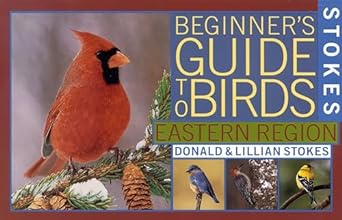
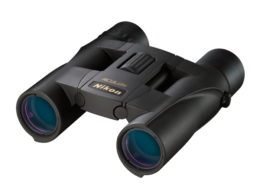
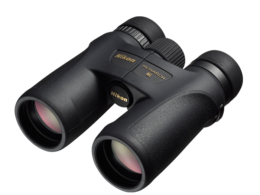
I read Kaufman Field Guide to Birds of North America and it's great for beginner.